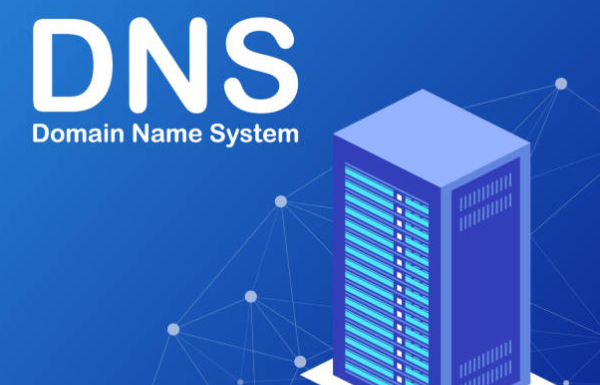Hello!
 A Domain Name System or DNS is an essential and central element of the internet. But because of its importance, it has also become the first point of entry for hackers.
A Domain Name System or DNS is an essential and central element of the internet. But because of its importance, it has also become the first point of entry for hackers.
With cyberattacks becoming more sophisticated, businesses need to step up their cybersecurity and ensure their DNS is properly configured.
This article will further explain what DNS is and how it’s related to cybersecurity. I’ll then provide six different ways you can enhance your DNS security.
Let’s get started.
What is DNS?
 DNS stands for a Domain Name System. It’s often referred to as the internet’s phonebook because it contains the database of every domain name and IP address online. DNS’s purpose is to connect domain names to the corresponding IP addresses.
DNS stands for a Domain Name System. It’s often referred to as the internet’s phonebook because it contains the database of every domain name and IP address online. DNS’s purpose is to connect domain names to the corresponding IP addresses.
A DNS directory is vast, as of the first quarter of 2021, it holds 363.5 million registered domain names. To function correctly, the DNS directory is spread out globally and stored on various DNS servers. The servers regularly communicate with each other for updates and keep the internet working smoothly.
How It Works
When a user types in a domain name to a web browser, the computer will firstly check the cache and see whether the domain name has been requested before. If not, then it will proceed to send a request to the local DNS server.
The local DNS server will then see whether it has any records on its cache. If none is found, then it will need to find the details of the name server that’s hosting the domain record for that specific domain.
The local DNS server will then separate the domain name into sections.
 For example, www.test.org will be split into:
For example, www.test.org will be split into:
- www
- test
- org
The org is the top-level domain. So the local DNS server will connect to a root name server first to find more details about the server that holds the specific domain info for the TLD.
Once the name server’s IP address is found, the next step is to request the new server to see which name server has the details about the second part of the domain, which is the test part.
 Afterward, the local DNS server will craft more requests for the name servers that host the information on the domain name test.org and then www.test.org until the IP address is found. Finally, the web browser can use the IP address to contact the server which hosts the website and connects it to the web browser.
Afterward, the local DNS server will craft more requests for the name servers that host the information on the domain name test.org and then www.test.org until the IP address is found. Finally, the web browser can use the IP address to contact the server which hosts the website and connects it to the web browser.
The computer will save the information in a DNS cache. This helps speed up the process of connecting domain names to IP addresses. But on rare occasions, the DNS cache can malfunction.
One of the reasons could be that the website changed servers or malware trying to redirect the users to a malicious website.
How DNS is Related to Cybersecurity

A report in 2020 found that globally, 87% of organizations experienced some kind of DNS attacks, with the average cost of each attack amounting to around $924,000.
DNS has become the center of cyberattacks simply because it is the heart of the internet network. Websites that have misconfigured DNS are especially vulnerable to cyberattacks like data theft.
Most attacks are also targeted at the cloud since most businesses rely heavily on off-premise working and cloud infrastructure. One attack that stands out is domain hijacking, where the user is not connected to the desired service but a fake one instead.
But even though DNS is the main target, many companies ignore or fail to take the necessary steps to protect themselves, leaving the DNS gateways unprotected. 25% of businesses don’t even conduct any analytics on their DNS traffic.
6 Ways to Strengthen the DNS Security
There are various DDoS attacks that target DNS, such as DNS amplification, domain hijacking, and DNS floods. Hence you need to strengthen your DNS security to prevent those attacks. Here are some ways to do that.
1. Use Multi-Layered Protection

One way to defend against all types of DNS attacks is to use a solution that provides multiple layers of DDoS protection. The DNS should be equipped with DDoS mitigation tools that will constantly monitor any malicious traffic.
In most cases, the mitigation process happens locally, so if there is an attack, it should be automatically rerouted to a mitigation network that’s separate from the infrastructure. This isolates the impact so the security team can freely resolve the problem.
2. Isolate Nameservers
Highly scalable and cloud-based service DNS is used by many customers, each having their domain clustered into a single network and sharing one nameserver. This increases the chances of you feeling the impact of other users in the same network.
To prevent this, you should choose a DNS provider that separates the DNS network into segments, each having its nameserver that’s only shared by a small group of customers.
With fewer customers, you lower the odds of getting impacted by other users who are facing issues. This strategy allows the DNS provider to provide effective and immediate mitigation should an attack happen, preventing collateral damage to the other customers.
3. Use the Right DNS Resolvers

DNS resolvers are servers that respond to all domain name requests. Their main task is to ensure that users are routed to the correct websites. One of the most common software used to manage DNS is the Berkeley Internet Name Domain (BIND). But because it is an open-source code, any hacker can gain access and exploit it.
Neustar, on the other hand, is not open-source software. It has developed its proprietary code and collaborated with third-party security auditors to help look for vulnerabilities. It was found that there was no immediate vulnerability that hackers could exploit remotely.
4. Deploy DNS Security Extensions
DNS Security Extensions or DNSSEC is a set of specifications that helps existing DNS security protocols. It works by adding cryptographic authentication for any responses it receives from DNS servers.
The goal of DNSSEC is to defend DNS against cyberattacks like cache poisoning and pharming attacks. It’s somewhat similar to what HTTPS does for websites.
There’s still an alarmingly low adoption rate. A report found that only 20% of businesses use DNSSEC as one of their security measures. Hence, applying this adds extra layers of security and makes you seem more trustworthy to customers for taking additional steps to ensure their safety.
5. Choose a Private DNS Network
Using a private DNS network reduces the dependency on public internet connections, eliminating the most dangerous part of the DNS process.
 Some other benefits of using a private network are:
Some other benefits of using a private network are:
- Better reliability – Should a DDoS attack happen, requests will continue to resolve within the private network where DNS is deployed.
- Lower latency – Internet connection issues could hinder DNS performance, leading to a poor user experience. The private network avoids general internet networking, keeping the online experience fast and efficient.
- Enhanced security – A private network minimizes outside threats because they are confined from the public network.
6. Identify Potential Security Issues
Businesses need to identify potential security issues and continuously monitor them to make sure that they’re secured with the proper security. To do this, you should use an intelligent dashboard from your DNS security software.
With the new digital regulations like General Data Protection Regulation (GDPR), you must identify threats before they attack the DNS infrastructure.
Also read:
- Spanish Lease Agreement: What To Do If The Tenant Does Not Pay Rent For An Apartment In Spain
- There are 10 IoT Business Opportunities that are on the Rise
- Top 6 Benefits of Software Development as a Service
Conclusion
DNS, which is essentially the internet’s phonebook, is a vital part of the internet. But because of its importance, it has also become the first entry point for hackers.
With 87% of businesses experiencing some sort of DNS attack, it is more imperative than ever to strengthen your DNS security.
 Hence, I’ve provided six various ways to do just that. Let’s recap:
Hence, I’ve provided six various ways to do just that. Let’s recap:
- Use multi-layered protection
- Isolate nameservers
- Use the right DNS resolvers
- Deploy DNS security extensions
- Choose a private DNS network
- Identify potential security issues
All that’s left to do is apply those methods and minimize the chances of hackers gaining entry to your website through the DNS traffic.
Thank you!
Join us on social networks!
See you!






